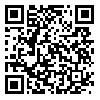BibTeX | RIS | EndNote | Medlars | ProCite | Reference Manager | RefWorks
Send citation to:
URL: http://jdisabilstud.org/article-1-2769-fa.html

 ، فائزه جهان*2
، فائزه جهان*2 
 ، ابوالقاسم یعقوبی3
، ابوالقاسم یعقوبی3 
 ، علی جهان4
، علی جهان4 

2- استادیار گروه روانشناسی، واحد سمنان، دانشگاه آزاد اسلامی، سمنان، ایران
3- استاد گروه روانشناسی، دانشکدهٔ علوم اقتصادی و اجتماعی، دانشگاه بوعلیسینا، همدان، ایران
4- دانشیار گروه مهندسی صنایع، واحد سمنان، دانشگاه آزاد اسلامی، سمنان، ایران
چکیده
زمینه و هدف: فراشناخت بهمعنای توانایی بازنمایی و نظارت و کنترل فرایندهای شناختی درحال انجام است که به افراد در انجام بسیاری از اقدامات کمک میکند. از دیگر عوامل مرتبط و مؤثر با تفکر انتقادی، توانایی شناختی است. این پژوهش با هدف بررسی رابطهٔ غیرمستقیم تفکر انتقادی با تواناییهای شناختی با میانجیگری فراشناخت در دانشجویان دانشگاه علومپزشکی شهر سمنان انجام شد.
روشبررسی: روش پژوهش حاضر، تحلیلیهمبستگی از نوع مدلسازی معادلات ساختاری بود. جامعهٔ آماری پژوهش را تمامی دانشجویان دانشگاه علومپزشکی شهر سمنان در سال ۱۴۰۰-۱۳۹۹ تشکیل دادند. نمونهگیری بهصورت دردسترس انجام گرفت. بهمنظور تعیین حجم نمونه با استفاده از قاعدهٔ نمونهگیری مدلسازی معادلات ساختاری، ۳۸۰ دانشجو انتخاب شدند. ابزارهای گردآوری دادهها پرسشنامهٔ تفکر انتقادی (ریکتس، ۲۰۰۳) و فرم کوتاه پرسشنامهٔ فراشناخت (ولز و کاترایت-هاتن، ۲۰۰۴) و پرسشنامۀ تواناییهای شناختی (نجاتی، ۱۳۹۲) بود. دادهها با استفاده از ضریب همبستگی پیرسون و روش مدلسازی معادلات ساختاری در نرمافزارهای SPSS نسخهٔ ۲۵ و AMOS نسخهٔ ۲۵ و سطح معناداری ۰٫۰۵ تحلیل شدند.
یافتهها: نتایج نشان داد، مدل مفروض با دادههای گردآوریشده برازش داشت (۲٫۹۸=/df۲χ، ۰٫۹۱۹=GFI، ۰٫۸۸۲=AGFI، ۰٫۹۱۲=CFI، ۰٫۰۷۲=RMSEA). همچنین نتایج مشخص کرد، ضریب مسیر کل بین تفکر انتقادی و تواناییهای شناختی (۰٫۰۰۱=p، ۰٫۳۷۲=β) و ضریب مسیر فراشناخت با تواناییهای شناختی (۰٫۰۲۲=p، ۰٫۱۴۰=β) و ضریب مسیر غیرمستقیم بین تفکر انتقادی و تواناییهای شناختی (۰٫۰۲۱=p، ۰٫۰۴۹=β) مثبت و معنادار بود.
نتیجهگیری: براساس یافتههای این پژوهش، فراشناخت در رابطهٔ بین تفکر انتقادی و تواناییهای شناختی نقش میانجی دارد. یافتههای پژوهش گام مهمی درجهت شناخت عوامل مؤثر در تفکر انتقادی است.
| بازنشر اطلاعات | |
 |
این مقاله تحت شرایط Creative Commons Attribution-NonCommercial 4.0 International License قابل بازنشر است. |


